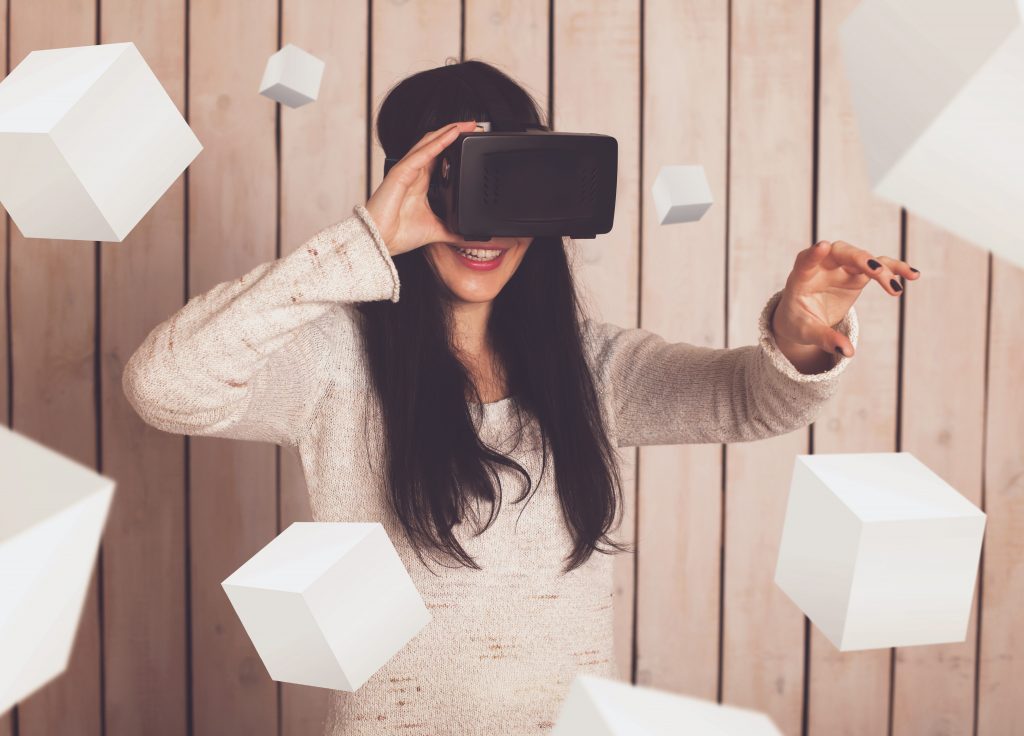Close Encounters of the 4th Kind: Industry 4.0 and Fashion

There’s a new breed of consumers out there. They are young and vivacious, intelligent and educated. They are the highest paid generation in history. Not only have millennials redefined massive spending, their ready cash created the “see now, buy now” way of thinking and consuming. In a way, millennial consumers’ immediate needs have changed the way we purchase products, services, and most of all, fashion.
Still, the millennial consumer did not reach this fashion junction without a little help from emerging technologies. The advent of Industry 4.0, the fourth industrial revolution, has reformed global industries ten-fold, be it building bridges, assembling automobiles, or manufacturing textiles. Industry 4.0, or smart manufacturing, defines the growing trend of automation and data exchange in a wide range of vertical industries. The 4th industrial revolution has also brought innovation to the fashion industry. Not only has it transformed how designers, manufacturers and retailers operate, industry 4.0’s unprecedented success is due, in part, to how new trends are handled and the way consumer demands are met.
Winds of Change
The fashion industry has openly supported Industry 4.0, just as it’s been receptive to digital transformation, such as the implementation of 2D and 3D digital design software. Despite their initial trepidation, large retail brands realize that smart manufacturing deliver far more advantages than challenges, let alone enormous opportunities for growth and profitability.
For the textile manufacturing industry, nothing is more critical than productivity and accelerating the supply chain. One of the key benefits of the smart factory, is that it enables manufacturers to gain a real-time view of their processes – from the design table to the shop floor, to the retailer’s shelves. Gaining access to real-time data leads to greater operational flexibility and supply chain transparency, such as forecasting, planning and production control.
Another essential need is the industry’s reliance on mass-production to save on time, costs and resources. Industry 4.0 technology, namely, industrial IoT, connects man to machines, and machines to machines, enabling manufacturers to gain control of and accelerate the production process and handle production problems in real time. Further, global brands must address the growing need for personalized garments on demand. The smart factory, where production is fully automated, enables retailers to modify manufacturing processes in real time, and even alter designs and patterns, to keep pace with the latest trends to satisfy demanding consumers. The smart factory also enables greater communication throughout the supply chain, connecting designers to manufacturers, and manufacturers to retailers, which results in faster, more informed decision-making and significantly shorter time to market.
The ABC’s of 4.0
According to a recent industry report, investment in smart manufacturing could fuel productivity growth of over 27% over the next five years. But to realize this level of growth, the fashion industry needs to take advantage of Industry 4.0’s offering. To remain competitive, leading brands and even smaller design houses will want to educate their workforce on how to digitize and automate their processes.
To grasp the scope of Industry 4.0, is to first map out its offering that includes the Internet of Things (IoT), Virtual Reality (VR), Augmented Reality (AR), Artificial Intelligence (AI), and Blockchain. These emerging technologies, implemented as either standalone or combined solutions, are the cornerstone of Industry 4.0, with IoT as the group’s frontrunner. IoT is a system of interrelated computing devices, machines, objects, or people that can transfer data over a network without requiring human-to-human or human-to-computer interaction. In the fashion industry, IoT has helped empower manufacturing processes, for example, by using sensors to track raw materials as they are being processed, including quantity and location. With IoT data so precise, alerts can be generated automatically every time a fabric moves along the assembly line, and even when finished product is loaded into a truck, all without using any manpower.
It’s disruptive technologies, such as VR and AR, that are taking the fashion industry by storm, with benefits for both consumers who openly embrace the digital revolution, as well as retailers, who now have the tools to generate virtual store simulations. The use of VR, for example, can enable consumers to enjoy a digital shopping experience, such as sampling hundreds of virtual garments in just minutes before making a purchase thanks to this technology’s ability to create a simulated environment. When it comes to retailers, companies like InContext Solutions that developed the VR-based ShopperMX, enable retailers to experiment with signage, product display and layout, without the time and resources needed to build and test these features in the physical world. The reach of tech innovation doesn’t stop, or even start, there. AR has already reached the catwalk, when at the 2016 Paris Fashion Week, an AR fashion show enabled audience members to scan models using a dedicated smartphone app to reveal hidden designs.

Up there with VR and AR is another immensely popular acronym, AI, or machine learning, where computer systems can perform tasks that usually require human intelligence. AI has recently taken on a variety of fashion-related roles, such as personal shopper, model, and stylist, and even the role of a fashion designer. Global giant, Amazon, for example, has started using AI to design clothes, by developing an algorithm that learns about a particular style of fashion from images, then generates new items in similar styles from scratch. Growing in popularity and deployment throughout the industry, Sofie Hackford, a fashion AI guru, predicts that applications that perform automated tasks such as AI and bots, will become essential to serving industry needs. According to Hackford, “The bot will soon represent the fashion industry, our own avatar to negotiate on our behalf. It will represent us to the world by allowing brands to market directly to it, rather than us.”
Revered as the newcomer to the group of Industry 4.0’s emerging technologies, is blockchain, a shared database that automatically updates information across an entire network, without the need for a central intermediary. In addition to integrating IoT, AR, VR and AI into their operational processes, fashion retailers are now using blockchain apps for supply chain and inventory management, for example, to track shipments of raw materials from source to factory, and then track the finished product through its entire distribution chain, right to the consumer. Blockchain is also being deployed in the industry’s marketing campaigns. In 2017, London-based designer Martine Jarlgaard, used a blockchain app to produce garments with ‘smart labels’ that allowed consumers to scan and see every step in the production process, from raw material to finished product, so they would know precisely how and where their clothes were made.
The Road Less Traveled
With so much technology in abundance, it’s a wonder that fashion designers, manufacturers and retailers can make informed choices, let alone, decisions as to which of these technologies, or perhaps all of them combined, will make them more competitive, more productive, and more profitable. Legendary adman, Jay Chiat, whose award-winning branding campaigns included Nike, Reebok, and the famed Energizer Bunny, was quoted as saying, “Technology is the fashion of the ’90s. It affects everyone, and everyone is interested in it, either from fear of being left behind or because they have a real need to use technology.”
Technology in the fashion industry is still a work in progress, much like that of the talented designer still on his drawing board in his small, family-run atelier. One thing is certain, the global fashion industry, valued at 3,000 billion dollars, is primed and ready for change. It is these and other emerging technologies that will drive this change, in support of digital transformation across the industry.

 English
English  French
French  Italian
Italian  Spanish
Spanish